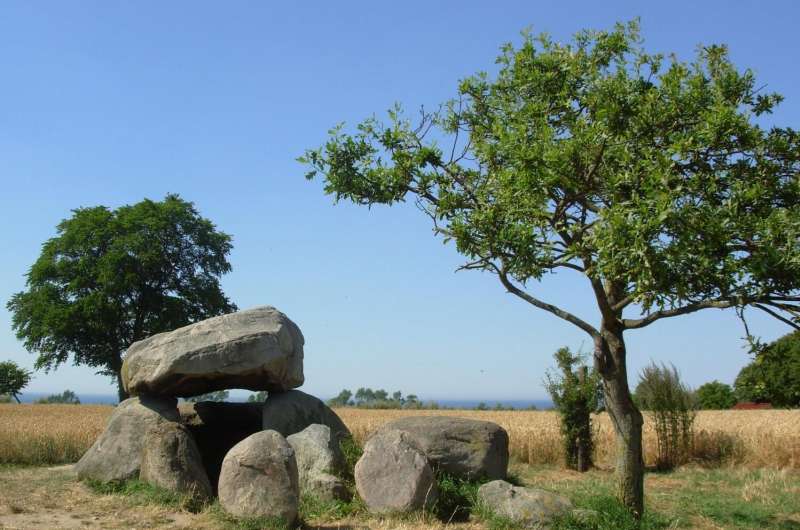Researchers offer new interpretation of a 4,000-year-old cemetery

Fundamental technological changes often also cause profound social shifts. This is not only evident in the current case of digitalization, but also in the case of industrialization in the 19th century or the introduction of bronze as a work material about 4,000 years ago. Understanding such transitional periods in the past can therefore also help to better classify current processes.
Two archaeologists from the ROOTS Cluster of Excellence at Kiel University have now published a study in the journal Slovenská archeológia that sheds new light on the chronological sequence and social structure of the Early Bronze Age Nitra culture in present-day Slovakia. The new research on the Výčapy-Opatovce cemetery 75 kilometers northeast of Bratislava disproves earlier assumptions that different areas of the cemetery were laid out consecutively.
“We were able to show with new natural scientific dating that the investigated burials were laid out more or less simultaneously. Different grave goods are therefore more likely to be explained socially, not temporally,” explains Fynn Wilkes, one of the two authors.
His colleague and co-author Henry Skorna adds, “The study thus opens up new interpretive possibilities for this important cemetery, that is crucial for understanding the earliest Bronze Age in Southeastern Europe.”
The burial ground of Výčapy-Opatovce has been known to archaeologists since the 1950s. More than 300 graves have been archaeologically investigated—most of them can be assigned to the so-called Nitra culture. This is the earliest Bronze Age culture on the northwestern edge of the Carpathian Basin. Výčapy-Opatovce is one of the largest cemeteries that can be assigned to this archaeological culture.
The Early Bronze Age in southwestern Slovakia, about 4,000 years ago, was characterized by intense social and economic changes. Due to its location on the northern edge of the Carpathians and near the Moravian Gate, the region also plays an important mediating role between Central and Southeastern Europe. Despite this importance, very little dating based on the measurement of the carbon isotope C14 is available for the Early Bronze Age in Slovakia.
An earlier study of the Výčapy-Opatovce cemetery had therefore classified various grave groups into several chronological stages based only on the grave goods and the costume tradition reconstructed from them.
In 2021, the two authors of the current study had samples from the cemetery dated using the C14 method, and evaluated the results. They clearly show that the burials with different costume traditions are very close in time.
“We can conclude that different social groups were buried here in clusters,” explains Fynn Wilkes.
Henry Skorna adds, “This grouping of graves around particularly richly furnished ones in each case can also be observed at other prehistoric cemeteries and is therefore actually not surprising.”
The authors, who conducted the study as part of their doctoral theses in the ROOTS Cluster of Excellence, hope to open up new discussions and further interpretive insights around the Early Bronze Age, an exciting and dynamic period of European prehistory.
More information:
Fynn Wilkes et al, The Dawn of the Early Bronze Age in South-Western Slovakia. A Re-Evaluation of the Social Structure and Chronology of Výčapy-Opatovce, Slovenská archeológia (2022). DOI: 10.31577/slovarch.2022.70.3
Provided by
Cluster of Excellence ROOTS
Citation:
Researchers offer new interpretation of a 4,000-year-old cemetery (2022, December 20)
retrieved 21 December 2022
from https://phys.org/news/2022-12-year-old-cemetery.html
This document is subject to copyright. Apart from any fair dealing for the purpose of private study or research, no
part may be reproduced without the written permission. The content is provided for information purposes only.
For all the latest Science News Click Here
For the latest news and updates, follow us on Google News.

